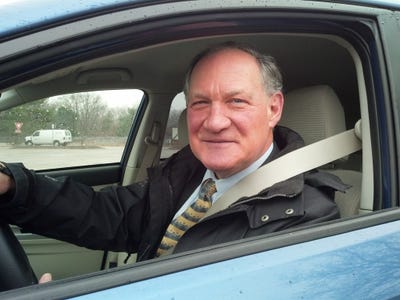‘People Still Want to Go to the Car Dealership’
“The big challenge is they want us to guide them through the process,” Hyundai marketer Laura Rathai says at a Reuters online event.

Many car dealers now regularly home deliver newly purchased vehicles to customers who ask for that service, but is a higher next-level on the digital horizon?
The issue comes up at a Reuters’ online event at which moderator Tanya Gazdik of MediaPost asks: “Will automakers be like Amazon Prime, where you order a car and it shows up in your driveway a day or two later?”
Online retail giant Amazon is an example of a company that offers great customer experiences, says panelist Laura Rathai, a Hyundai marketing director.
But she adds that most consumers aren’t interested in completely bypassing the dealership experience.
“People still want to go to the car dealership,” she says. “The experience at the dealership can’t be underestimated. That’s where people smell and feel the car and get the confidence of their vehicle choice. People so much want to go to the dealership.”
Co-panelist Beth Mach agrees. Human senses come into play at the dealership. On the surface, it may seem odd that car buying involves the olfactory system. But the so-called new-car smell is a powerful sales motivator.
“Until we have smell-a-vision, we won’t be able to give you that type of experience online,” says Mach, chief customer officer at TrueCar, an Internet automotive marketplace. Her position was created last year.
Gazdik notes that an automaker once tried to eliminate that new-car smell, “and people were furious.”
The program’s discussion focuses on modern marketing models. Gone is the traditional sales funnel in which customers metaphorically enter the wide top and eventually exit the bottom tip by choosing a car and dealership.

laura rathai
“The predefined funnel is not there anymore,” says Europe-based Rathai. “The experience used to be that we guided people through that predefined funnel. Now, the customer wants more empowerment.”Yet they also want a degree of help from automakers and dealers, while at the same time not relinquishing their control of the purchase process. “We need to know what they want,” Rathai says. “The big challenge is they want us to guide them through the process.”
Referring to customers ultimately switching from online shopping and researching to the offline dealership visit, “they want us to carry over information from one point to another,” she says.
That means not starting over at the dealership, which has become a major auto retailing no-no. “Don’t start from scratch,” Mach says.
She notes the path to purchase no longer is linear. For example, it’s not unusual for car consumers to start their shopping journey online, visit the dealership in person, return home for more online work and then return to the dealership to close the deal.
Rather than following a straight line like it pretty much did previously, today’s purchase process includes twists and turns.

beth mach
Mach likens it to a French horn that contains an intricate pattern of coils and tubes, and from that “comes a beautiful sound.”Customer-first marketing changes the consumer-dealer relationship, she says. If it is done right, “the customer will look at the dealership as a friend, not a foe. That’s different than before. And it’s great. It’s good if you make people feel comfortable.”
A dealership using online tools, including customer-relationship-management software, can get a good sense of shoppers from their online behavior. That helps in the crucial online-to-offline pivot, says Rathai. “Creating profiles helps salespeople know how to treat customers.”
Steve Finlay is a retired WardsAuto senior editor. He can be contacted at [email protected].
About the Author
You May Also Like

